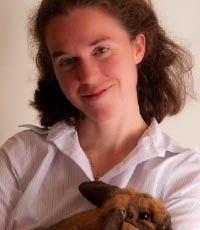You’ve Got a Friend in Bees - Planting bee-friendly flowers


They say that April showers bring May flowers, and that is good news indeed for beekeepers and gardeners alike. It’s no secret that the success of gardens and farms depends heavily on the pollination efforts of bees. But it can be easy to overlook the fact that the reverse is also true—the success of the beekeeper (and the hive) depends heavily on the availability of flowers for those bees to work. Nectar and pollen are the building blocks upon which the entire hive depends—and if there are no flowers, there are no bees.
Honey bees will (literally) go to great lengths to find flowers. An average worker bee may travel a distance equivalent to 1-½ times around the Earth in her lifetime, and she may visit two to five thousand flowers per day! There’s no question that gathering nectar and pollen puts a lot of wear and tear on the worker bees, but the good news is that you can help your bees and make things easier on them by simply planting a garden full of flowers and blossoms that bees enjoy. Not only will you cut down on the distance your bees must travel to find food, your garden itself will flourish thanks to the excellent pollinators living nearby.
Naturally, bees utilize a huge variety of flowers, blossoming vegetables, and trees in their work, but here is a springboard list of ideas to get you started.
Flowers bees love
Bee Balm - The intense colors of bee balm (Monarda) not only attract plenty of bees to your garden, they’re also a favorite of hummingbirds and butterflies, as well.
Sunflower - There’s nothing like an impressive selection of sunflowers to add some color—and height—to your garden space. Your honey bees will use sunflowers, but you’ll want to plant multiple flowers close together, otherwise the bees may not be attracted to the area.
Sedum - On a late summer or early fall afternoon, bees of all varieties—honey bees, bumble bees, and more—can be found crawling about on the large blossoms of sedum. It’s a great flower for landscaping around your home.
Catmint - An excellent source of summer nectar, and very popular with bees.
Aster - Another useful autumn nectar source.
Purple Coneflower - Easy to grow and hardy, purple coneflowers make a beautiful addition to your garden, and the shape of the flower is easy for bees to work.
Flowering vegetables/herbs
Cucumbers/squash - If you plant cucumbers, summer squash, or winter squash (think pumpkins), your honey bees will be delighted! All of these vegetable plants produce large, fantastic yellow blossoms that bees of all varieties love to work. Oftentimes these flowers grow so large that honey bees will actually crawl deep inside the blossom as they collect nectar and pollen.
Chives - Early in the summer, chives produce a prolific display of small round purple flowers that honey bees can’t leave alone.
Asparagus - Asparagus plants can be a good source of pollen for honey bees.
Bee-friendly trees
Flowering crabapple - You’d be hard-pressed to find a more prolific blossom producer than a flowering crabapple tree. In mid-spring, these trees are alive with the active buzzing of thousands of honey bees.
Basswood - When considering blossoming trees for your bees, you might not think of large-growing hardwood species like basswood, but you should! In addition to being an attractive addition to your yard or property, basswood trees produce droopy summer blossoms that bees love. Some honey producers even specifically market basswood honey.
Magnolia - In southern regions, the delightful magnolia tree offers an abundant number of blossoms, with some trees blooming as early as February.
A few common bee-friendly wildflowers
Of course, your bees will naturally forage from wild sources outside your own garden and property. Here are a few wildflower species that they are bound to put to use:
Dandelions - Some folks don’t appreciate it when these yellow early spring “weeds” invade their lawns, but dandelions are actually an important nectar source that becomes available to bees long before other flowers begin to blossom. You can always mow the dandelions down later, once the bees have other flowers to work.
Clover - Clover blossoms don’t boast the impressive appearance of some of the more flamboyant flowers, but this doesn’t stop honey bees from heavily working a clover patch for all its worth.
Japanese knotweed - While we definitely do not recommend that you intentionally introduce this plant to your property (it is extremely invasive and quite a nuisance), honey bees do seem to find the knotweed’s late summer/early fall blossoms attractive. If this plant grows in your area, it can actually provide a beneficial late source of nectar when other plants have finished flowering in for the year.
Bees are resourceful, hard-working creatures, so why not make their jobs just a little bit easier by providing some bee-friendly plants in your garden this year? Not only will your bees thank you, but you’ll reap the rewards of a well-pollinated garden and plenty of extra honey flowing from your hives. And if that’s not a win-win, I don’t know what is.
Tags:Garden & Landscape

Acreage Life is part of the Catalyst Communications Network publication family.
















